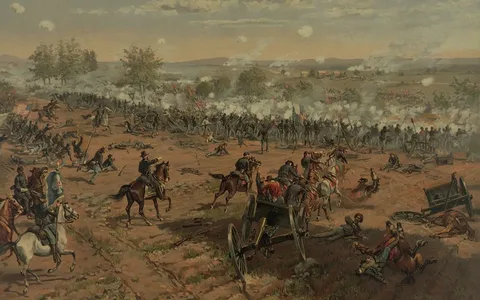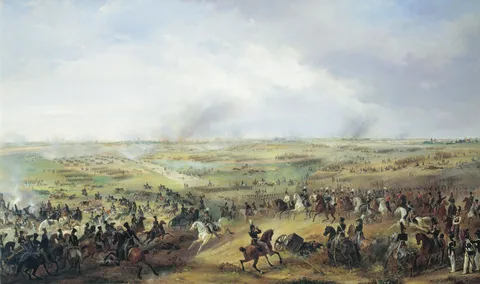The Battle of Tabuk, also known as the Expedition of Usra (the Hardship), was a pivotal military campaign led by the Prophet Muhammad in the year 9 Hijri (630 CE). Situated in the arid northwestern region of the Arabian Peninsula near the Gulf of Aqaba, the campaign marked the final military expedition led by the Prophet during his lifetime. Though it did not culminate in an active combat engagement, the strategic implications and outcomes of this expedition profoundly influenced the political and military landscape of early Islam and the broader Arabian Peninsula. This comprehensive exploration will detail the causes, preparation, journey, and aftermath of the Battle of Tabuk and conclude with insights and frequently asked questions to further illuminate this historic event.
The Battle of Tabuk

By the ninth year after the Hijra, the Islamic state established in Medina had expanded its influence significantly across Arabia. Following key victories such as the conquest of Mecca and the Battle of Hunayn, the Prophet Muhammad’s leadership was firmly recognized by many tribes. However, the northern borders of the Arabian Peninsula remained unstable, threatened by the presence of the Byzantine (Roman) Empire and their Arab Christian allies such as the Ghassanids, who controlled parts of the Levant and responded unfavorably to the growing Muslim power.
Around 9 Hijri, intelligence reached the Prophet that the Byzantine Emperor Heraclius was mobilizing a large force near the northern frontiers of Arabia, possibly to launch an invasion against the Muslims. Previous encounters, including the Battle of Mu’tah (8 Hijri) where the Muslims faced Byzantine forces, underscored the threat. Additionally, reports indicated the presence of highway robbers and hostile tribes in the region, further complicating security. The killing of the Prophet’s envoy, Harith ibn Umair al-Azdi, by a Byzantine-allied governor also escalated tensions, symbolizing an act of aggression that demanded response.
In response to these strategic threats, the Prophet prepared for a pre-emptive expedition to assert Muslim presence, deter Byzantine military plans, and forge alliances with regional tribes, thereby securing the northern frontier of the Islamic state.
Preparation for the Expedition
The march to Tabuk was unique due to the harsh climatic and geographic conditions. It occurred in Rajab, a month marked by intense heat and drought, precisely when the dates in Medina were ripening, indicating the tribe’s economic and agricultural rhythms. Despite the environmental challenges, the Prophet called on his followers to join this military campaign, emphasizing its importance.
Around 30,000 Muslims responded, making this one of the largest armies mustered under the Prophet’s command. However, not all were willing participants. A number of hypocrites (munafiqun) expressed reluctance or openly refused to join, motivated either by doubt about the threat or by a desire to weaken Muslim morale. These internal challenges were met with spiritual and political leadership, including the Prophet appointing Imam Ali as deputy in Medina during his absence, underscoring the gravity of the mission.
The expedition required extraordinary logistical planning. The army had to traverse 350 miles of arid desert terrain, with limited water and supplies, establishing numerous rest and prayer points known as the “Mosques of Tabuk.” Ibn Hisham, a renowned historian, documented seventeen such mosques, which marked the slow and arduous progress of the Muslim army toward the borderlands of the Byzantine Empire.
Read more: The battle of Bani Lehyan (6 Hijri)
The March and Strategic Diplomacy
The advance to Tabuk demonstrated Muslim resolve and strategic foresight. While the army marched in an intense heat through difficult terrain, the display of strength sent a clear message to the Byzantine forces and their allied tribes. Upon the arrival at Tabuk, the Muslims found no Byzantine forces assembled for battle — the enemy had retired in fear upon learning of the Muslim force’s formidable size and determination.
Although no pitched battle occurred, the expedition achieved its primary objectives: it asserted Muslim authority in a contested region and secured submission and treaties with key local powers. Principalities like Dumat al-Jandal and Aila (modern-day Aqaba) accepted the authority of the Prophet, agreeing to protect Muslim interests and pay tribute, thus extending the Islamic state’s influence without bloodshed.
The Prophet took the opportunity to establish formal treaties delineating the rights and obligations of the newly allied tribes, fostering a sense of security and cooperative governance across the northern reaches of Arabia. The mission was, therefore, as much a diplomatic success as it was a military demonstration.
Read about: The battle of Al-Hudaybeyah (6 Hijri)
Aftermath and Historical Significance
Upon returning to Medina, the Muslim community experienced a bolstering of morale and confidence. The successful expedition confirmed the growing strength of Islam and the leadership of the Prophet Muhammad. Several verses of the Quran were revealed in relation to the expedition, addressing the attitude of the hypocrites and underscoring the spiritual and communal resolve required to face challenges.
The expedition of Tabuk also marked the last military campaign led by the Prophet. Apart from its immediate political and military outcomes, it symbolized the unification and stabilization of the Arabian Peninsula under Islamic governance and foreshadowed the expanding reach of Islam beyond the peninsula.
The campaign’s significance extends beyond military achievement. It established lasting peace treaties with neighboring powers, secured Muslim trade routes, and deterred Byzantine incursions. The peaceful submission of previously hostile or neutral tribes enabled the consolidation of Islamic rule and paved the way for further expansions during the Caliphate era.
FAQs
Why is the Battle of Tabuk also called the Expedition of Usra?
Did any actual fighting occur at the Battle of Tabuk?
No, there was no direct battle or military confrontation at Tabuk. The Muslim army’s overwhelming presence and determination caused the Byzantine forces and their allies to retreat before any fighting took place.
How did the Battle of Tabuk affect Muslim relations with neighboring tribes?
The expedition resulted in the peaceful submission and alliance of key Arab tribes and principalities near the northern borders, securing the region for Islam and enhancing political stability.
What was the significance of the Mosques of Tabuk?
These mosques were rest and prayer stops established during the journey to Tabuk, marking the march's progress and providing spiritual encouragement to the Muslim army through difficult desert terrain.
How did the expedition of Tabuk influence the future expansion of Islam?
By stabilizing the northern frontier and securing alliances, the expedition laid the groundwork for further Islamic expansion into the Levant and beyond during subsequent caliphates, strengthening the unity and security of the early Muslim community.
-
Why is the Battle of Tabuk also called the Expedition of Usra?
Because the expedition took place under extremely difficult conditions, including intense heat and scarcity of supplies, it was called the “Expedition of Usra,” meaning “the Campaign of Hardship,” highlighting the physical and logistical challenges faced.
-
Did any actual fighting occur at the Battle of Tabuk?
No, there was no direct battle or military confrontation at Tabuk. The Muslim army’s overwhelming presence and determination caused the Byzantine forces and their allies to retreat before any fighting took place.
-
How did the Battle of Tabuk affect Muslim relations with neighboring tribes?
The expedition resulted in the peaceful submission and alliance of key Arab tribes and principalities near the northern borders, securing the region for Islam and enhancing political stability.
-
What was the significance of the Mosques of Tabuk?
These mosques were rest and prayer stops established during the journey to Tabuk, marking the march’s progress and providing spiritual encouragement to the Muslim army through difficult desert terrain.
-
How did the expedition of Tabuk influence the future expansion of Islam?
By stabilizing the northern frontier and securing alliances, the expedition laid the groundwork for further Islamic expansion into the Levant and beyond during subsequent caliphates, strengthening the unity and security of the early Muslim community.
Conclusion
The Battle of Tabuk, though devoid of direct combat, was a masterstroke of leadership, strategy, and diplomacy. Faced with daunting environmental conditions, a formidable enemy threat, and internal opposition, the Prophet Muhammad successfully mobilized a large force and achieved the strategic aims of securing the northern frontier of the nascent Islamic state. The expedition reinforced Muslim presence, forged vital alliances, and demonstrated the importance of unity, preparedness, and faith in overcoming adversity.
The legacy of Tabuk endures in Islamic history as a testament to resilience, foresight, and peaceful conquest. It offers lessons about leadership under pressure, the power of diplomacy backed by strength, and the value of collective resolve in pursuing justice and security. The Battle of Tabuk stands as a profound example of how spiritual conviction and pragmatic strategy can combine to shape history.

